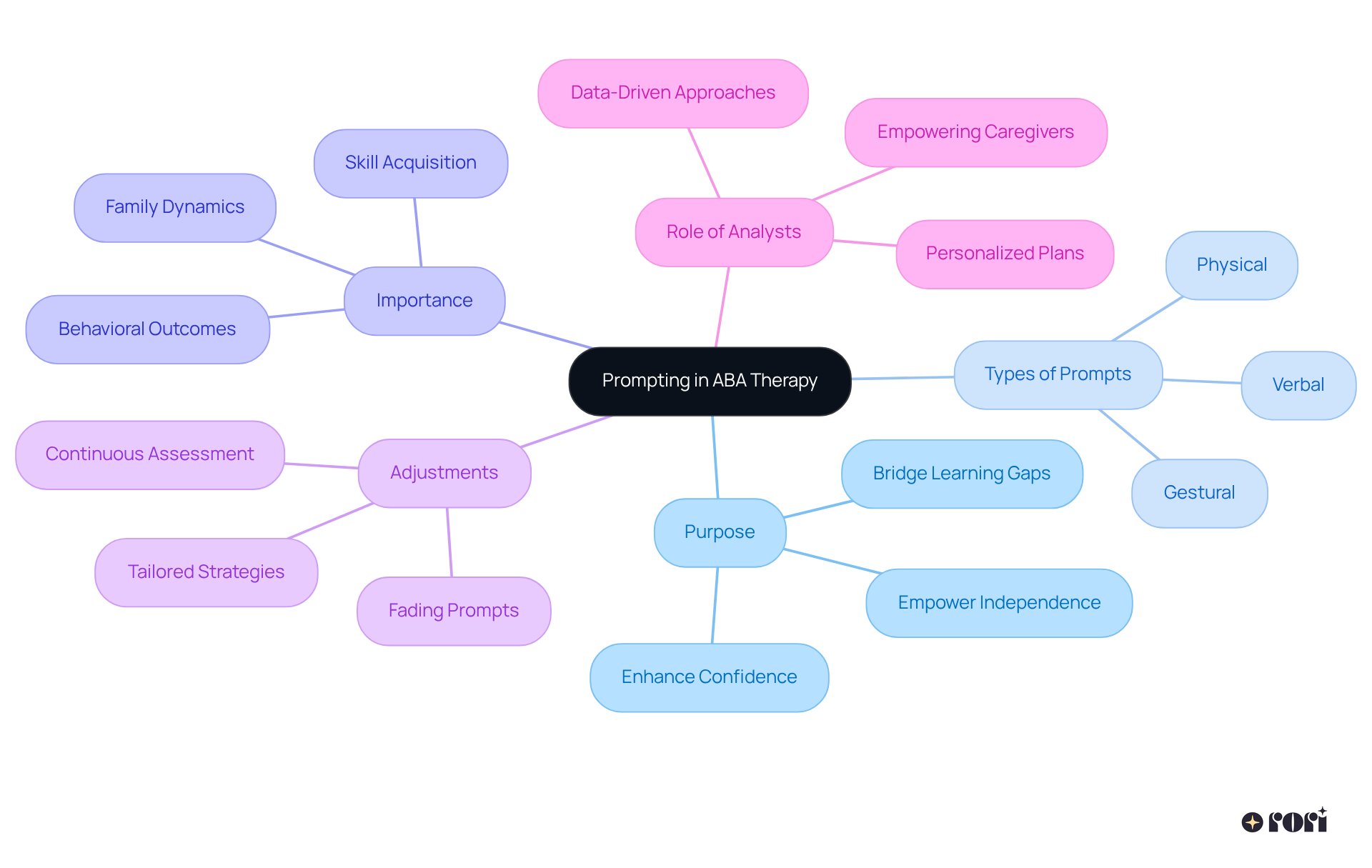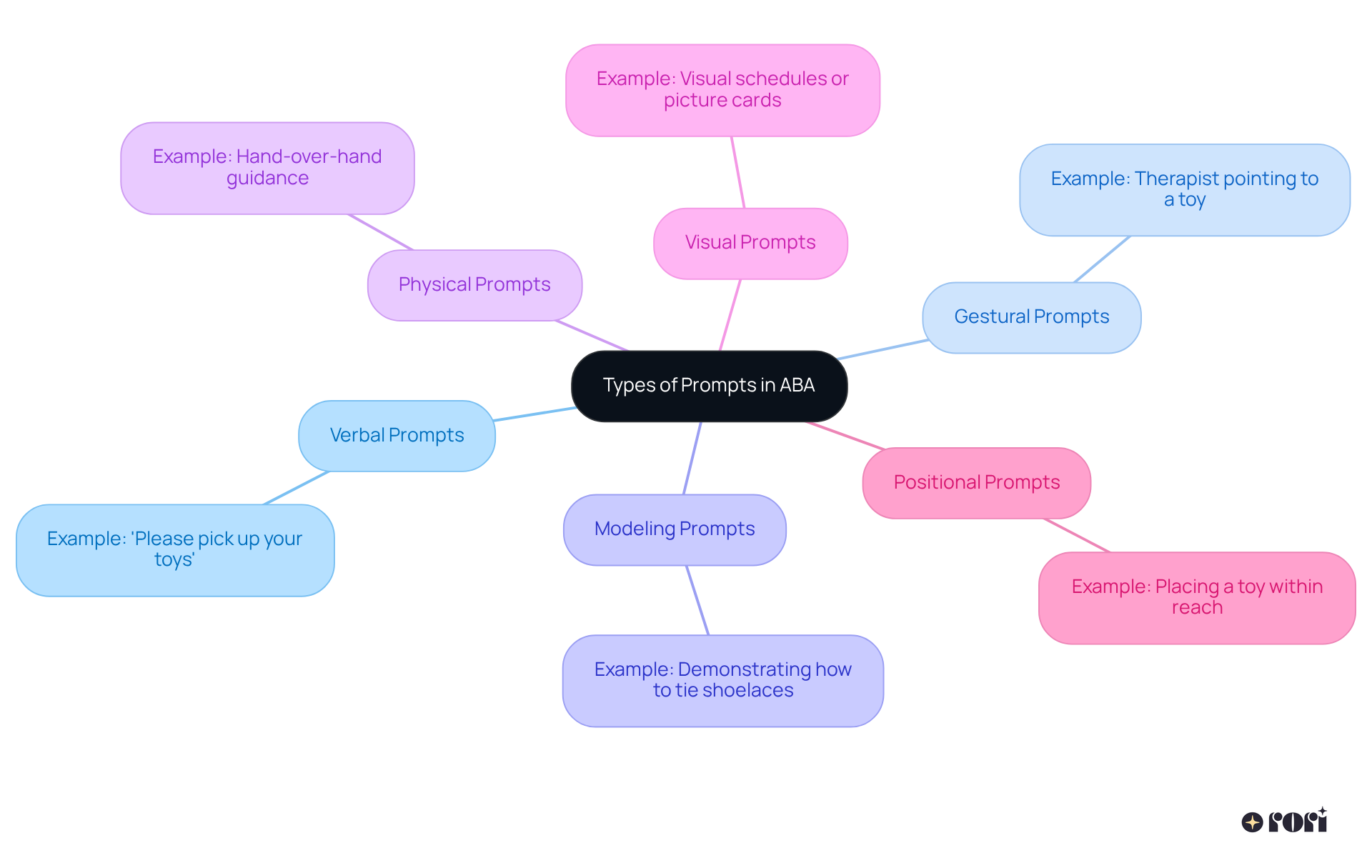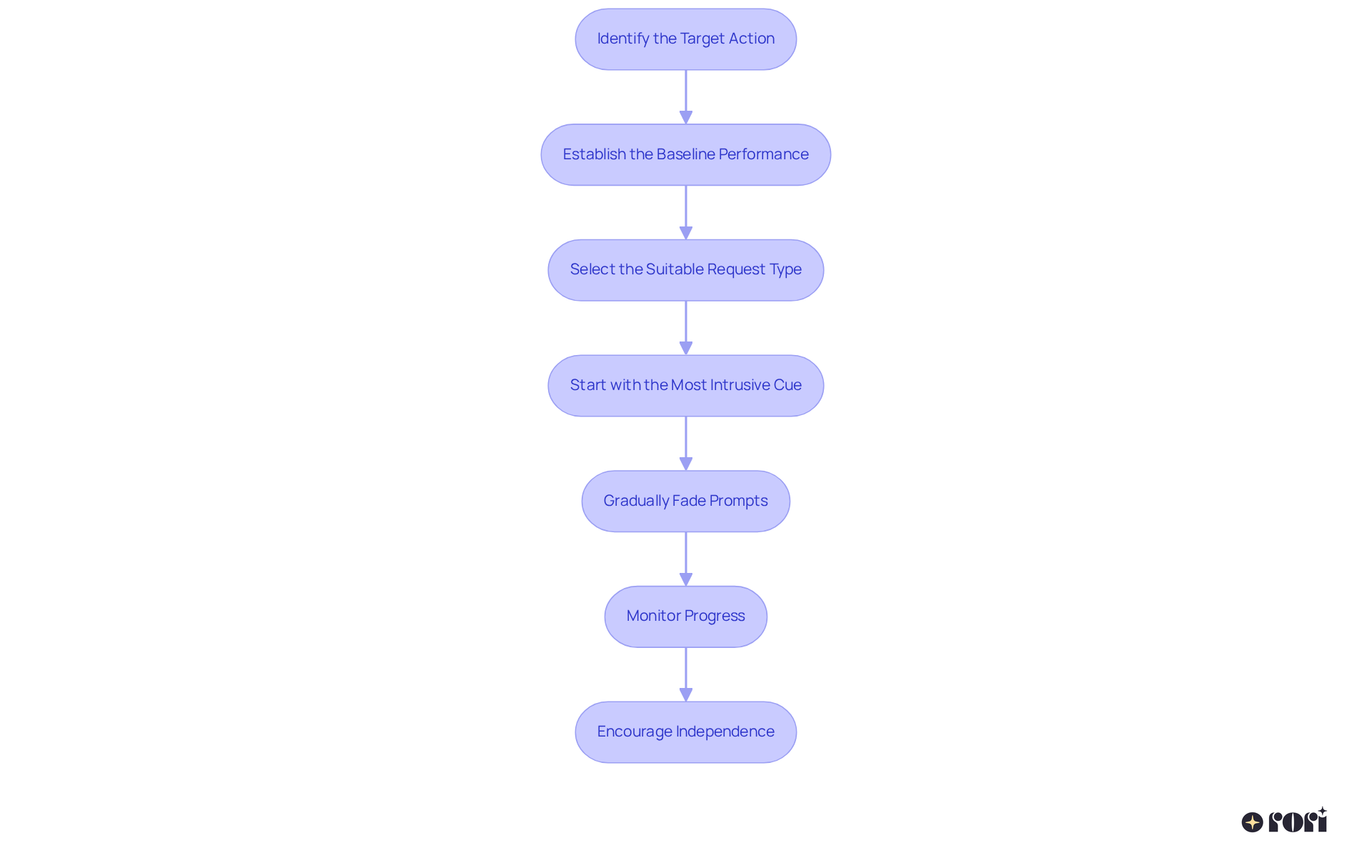This article dives into the art of prompting in Applied Behavior Analysis (ABA) therapy, a key to helping individuals—especially those with autism—gain skills and independence. It’s all about finding the right prompting strategies, from simple verbal hints to gentle physical cues, tailored just for the individual. As skills grow, these prompts can be gradually faded away, boosting confidence and self-sufficiency in the learning journey.
Let’s explore this together! Effective prompting isn’t a one-size-fits-all approach; it’s about understanding the unique needs of each person. Imagine a child learning a new skill with just the right amount of support—enough to guide them but not so much that they feel overwhelmed. This balance fosters a sense of accomplishment and encourages them to take those important steps toward independence.
By creating a supportive environment, we can help nurture their growth. Remember, every small success is a building block toward greater self-reliance. We’re here to help you every step of the way, so let’s keep the conversation going! What experiences have you had with prompting in your own journey? Your insights could really resonate with others.
Mastering the art of prompting in Applied Behavior Analysis (ABA) therapy is essential for nurturing the skills and independence of young individuals, especially those with autism. By using different types of prompts—like verbal cues and visual aids—therapists can guide learners toward their goals, helping them build confidence and self-sufficiency along the way.
But here’s the challenge: how do we implement these strategies effectively? And when is the right time to fade support to encourage true independence? Finding that delicate balance can be tough. What are the best practices for navigating this, and how can caregivers and therapists collaborate to optimize outcomes? Let’s explore this together!
Prompting in Applied Behavior Analysis (ABA) therapy is all about using cues or support to help young individuals show off their desired behaviors or skills. This important approach bridges the gap between what a young person can do now and what they are learning to do. Therapists guide these young learners through tasks by providing a level of prompting, which makes it easier for them to understand and apply new skills. This is especially crucial for fostering independence and confidence in individuals with autism, helping them learn how to respond appropriately in various situations.
Prompts can come in many forms—think verbal cues, gestures, or even physical support—tailored to meet each individual's unique needs. The main goal here is to empower young people to gain independence in their abilities and behaviors over time. Research shows that the level of prompting used in effective strategies can significantly boost skill acquisition, with evidence indicating that young learners make impressive strides in their mastered targets when these techniques are consistently applied. By gradually reducing prompts as individuals become more skilled, therapists can pave the way for lasting success and self-sufficiency, ultimately enhancing behavioral outcomes and family dynamics.
It’s essential to continuously assess and adjust the level of prompting strategies to ensure they stay effective as kids grow. Understanding the role of actions is key for successful adjustments in ABA therapy, guiding the selection and use of prompting techniques. This aligns perfectly with the work of certified analysts, who create personalized plans featuring measurable goals and evidence-based methods. This ensures that each young person's unique needs are met while empowering caregivers to support their development effectively. Let’s explore this together!

In ABA therapy, various kinds of prompts are frequently utilized to enhance learning, and understanding the level of prompting is key to effectively guiding our little ones through tasks. Let’s take a look at the primary types:
Verbal Prompts: These are spoken cues or instructions that guide a desired behavior. For instance, a therapist might say, "Please pick up your toys" to encourage the young one to engage in the task.
Gestural Prompts: Non-verbal cues like pointing, nodding, or using hand signals to indicate the desired action. Imagine a therapist pointing to a toy to inspire the child to play with it.
Modeling Prompts: Here, the therapist demonstrates the desired behavior for the child to imitate. For example, showing how to tie shoelaces before asking the child to give it a try.
Physical Prompts: This involves providing physical assistance, such as hand-over-hand guidance, to help the child complete a task. It’s especially useful for younger kids or those who need a bit more support.
Visual Prompts: Using images, symbols, or written instructions to guide behavior. Visual schedules or picture cards can serve as effective cues.
Positional Prompts: This means placing an object in a specific spot to encourage interaction. For instance, positioning a toy within reach to motivate the child to engage with it.
Every type of prompt serves its unique purpose and can be utilized in various combinations to enhance the learning process effectively, influenced by the level of prompting. By aligning these prompting strategies with the tailored plans created by qualified behavior analysts—including measurable goals and evidence-based strategies—caregivers can boost their involvement and support their child’s progress. This collaborative approach not only empowers caregivers with ABA principles but also fosters a nurturing environment that encourages positive behavioral changes and learning. Let’s explore this together!

Implementing a prompting hierarchy is all about providing the right kind of support as your child grows more skilled. Let’s break it down step by step:
Identify the Target Action: Start by clearly defining what you want to teach. This could range from communication skills to self-care tasks.
Establish the Baseline Performance: Take a moment to evaluate where your child currently stands with that skill. Understanding their starting point helps you gauge how much support they’ll need.
Select the Suitable Request Type: Choose the request type that best fits your child’s needs and the behavior you’re targeting. For example, if your little one struggles with spoken directions, a visual cue might work wonders.
Start with the Most Intrusive Cue: Kick things off with the most supportive cue, like physical assistance. This way, your child can successfully complete the task, building their confidence and reinforcing their learning.
Gradually Fade Prompts: As your child begins to master the skill, slowly reduce the level of prompting. If you started with a physical cue, transition to modeling, then to verbal, and finally to gestural or visual cues.
Monitor Progress: Keep an eye on how your child is doing and adjust the prompts as necessary. If they seem to be struggling, don’t hesitate to go back to a more supportive prompt before trying to fade again.
Encourage Independence: Once your child can handle the task with minimal prompting, cheer them on to do it independently. Celebrate their successes to boost their confidence!
By following this structured approach, you can effectively use prompting techniques to foster learning and independence in individuals with autism. Let’s explore this together and see how we can support our little ones every step of the way!

Fading prompts is such an important technique in ABA therapy, especially for helping young individuals gain independence as they learn new skills. Let’s dive into how to effectively fade prompts together:
First off, it’s essential to plan for fading right from the beginning. When you're creating a prompting strategy, think about how you’ll gradually reduce support. This foresight sets a clear path toward independence and aligns with the tailored plans developed by qualified behavior analysts, which include measurable goals and evidence-based strategies.
Next, consider using the least-to-most or most-to-least fading method. Choose a fading technique that fits the learner's style! The least-to-most strategy starts with minimal prompts, while the most-to-least method begins with more intrusive prompts and gradually reduces them. This way, you’re tailoring the approach to meet the unique needs of the individual.
Keep an eye on how the young one responds during the fading process. If they seem to struggle, it might be a good idea to slow down or even revert to a previous level of prompting. Being adaptable is key here, reflecting the ongoing evaluation and modification that effective program development emphasizes, particularly in relation to the level of prompting.
Don’t forget to reinforce those independent attempts! When the young one tries tasks on their own—even if they need a little prompting—be sure to encourage and praise them. Positive reinforcement not only builds confidence but also motivates further independence, which is crucial for improving behavioral outcomes.
Stay flexible in your approach. If you notice signs of prompt dependency, think about reintroducing prompts before trying to fade them again. This responsiveness is vital for ensuring that treatment plans remain effective and aligned with the individual’s progress.
Finally, create opportunities for generalization! Encourage the young one to practice their skills in various environments and situations. This helps them use their acquired abilities in real-world contexts, and active caregiver participation can really boost the overall effectiveness of ABA therapy.
By effectively fading prompts, practitioners can support individuals with autism in building the confidence and skills they need for independence, ultimately enhancing their quality of life. And remember, empowering caregivers with ABA principles and strategies is crucial for supporting children’s behavioral goals through active involvement and data collection. We’re here to help you every step of the way!

Effective prompting is truly a cornerstone of Applied Behavior Analysis (ABA) therapy, acting as a vital tool to help young individuals develop essential skills and foster independence. By using various types of prompts—like verbal cues and visual aids—therapists can craft tailored strategies that cater to each child's unique needs. This personalized approach not only enhances learning outcomes but also builds confidence, empowering individuals to navigate everyday situations with greater ease.
Throughout this discussion, we’ve highlighted the importance of a structured prompting hierarchy. It’s all about identifying target actions, selecting the right prompts, and gradually fading support as skills improve. Remember, monitoring progress and adapting strategies are key to ensuring effectiveness, along with the role of positive reinforcement in encouraging independence. By understanding and applying these techniques, caregivers and practitioners can effectively support children on their journey toward self-sufficiency.
Ultimately, mastering prompting in ABA therapy goes beyond just teaching skills; it’s about nurturing independence and enhancing the quality of life for individuals with autism. As caregivers and professionals engage in this collaborative process, they create an environment that promotes growth, resilience, and confidence. Embracing these strategies and staying flexible in their application will lead to meaningful progress and lasting success in the lives of those they support.
Let’s explore this together! We’re here to help you every step of the way!
What is prompting in ABA therapy?
Prompting in Applied Behavior Analysis (ABA) therapy involves using cues or support to help young individuals demonstrate desired behaviors or skills, bridging the gap between their current abilities and what they are learning.
Why is prompting important in ABA therapy?
Prompting is crucial for fostering independence and confidence in individuals with autism, as it helps them learn to respond appropriately in various situations.
What forms can prompts take?
Prompts can take many forms, including verbal cues, gestures, or physical support, tailored to meet each individual's unique needs.
How does prompting affect skill acquisition?
Research indicates that the level of prompting used can significantly enhance skill acquisition, leading to impressive progress in mastered targets when these techniques are consistently applied.
What is the goal of using prompts in ABA therapy?
The main goal is to empower young people to gain independence in their abilities and behaviors over time.
How do therapists adjust prompting levels?
Therapists continuously assess and adjust the level of prompting strategies to ensure they remain effective as children grow, guiding the selection and use of techniques.
How do certified analysts contribute to prompting in ABA therapy?
Certified analysts create personalized plans featuring measurable goals and evidence-based methods, ensuring that each young person's unique needs are met while empowering caregivers to support their development effectively.